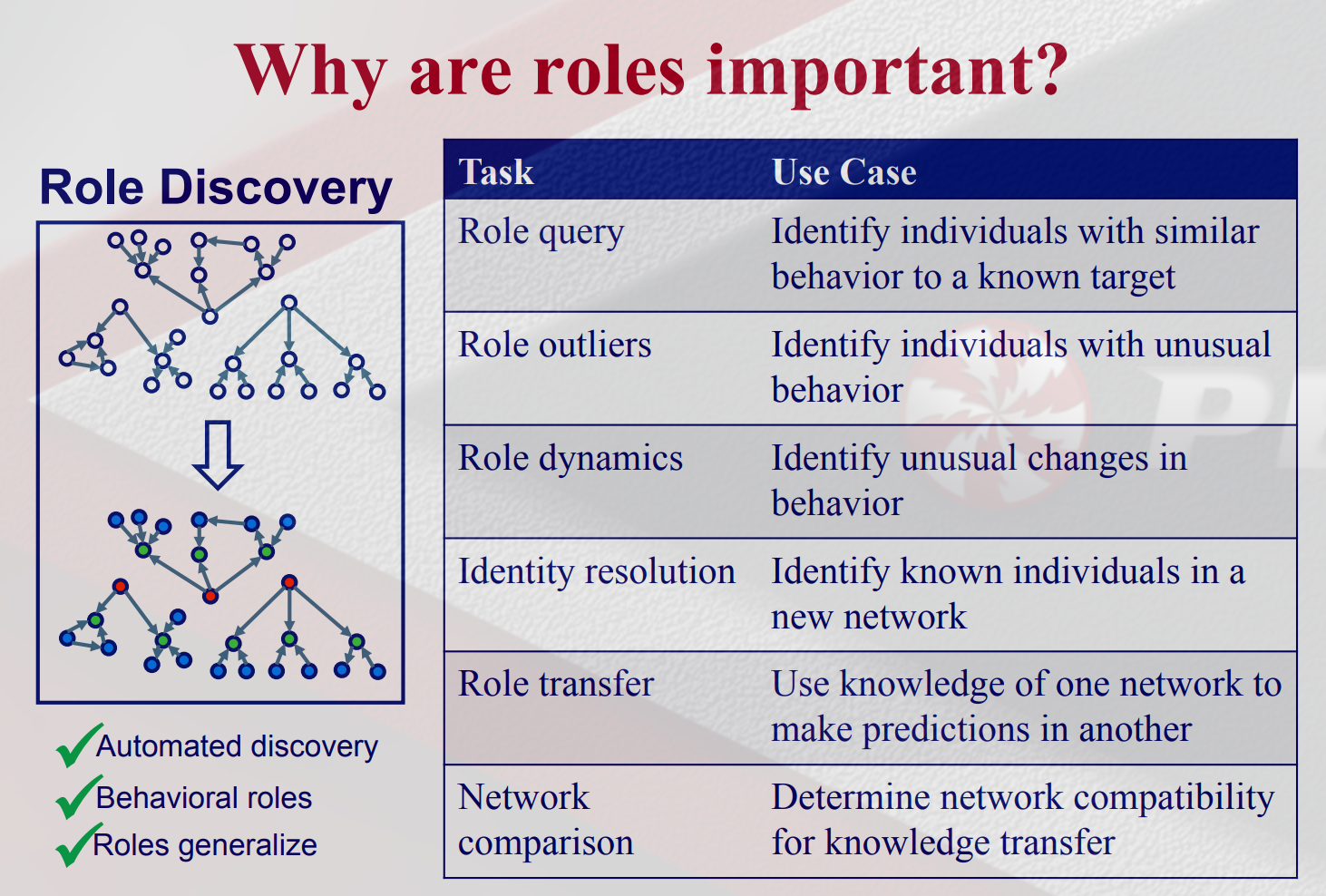Roles in graphs
related website: Beyond Community Detection - RolX; ReFeX and RolX ;
What are roles?
“Functions” of nodes in the network – Similar to functional roles of species in ecosystems
• Measured by structural behaviors
• Examples – centers of stars – members of cliques – peripheral nodes; bridges between groups; central connectors.
Why are roles important?

roles of individual nodes can also be gleaned收集的 from the structure of the graph. Combined with community detection, role detection can add crucial insight when looking for key information such as:
- Who are the most important, most connected figures - the “key influencers”?
- Which members are highly connected to multiple close-knit communities, forming “bridges” in the network?
- What distinguishes communities with almost no connections to the rest of the graph, from communities deeply embedded inside it?
The analysis required to answer these questions is complementary to community detection
Roles VS Communities:
• Roles group nodes with similar structural properties
• Communities group nodes that are wellconnected to each other
• Roles and communities are complementary
the distance between two vertices in a graph is the number of edges in a shortest path connecting them.
the eccentricity 



The radius 
The diameter 


